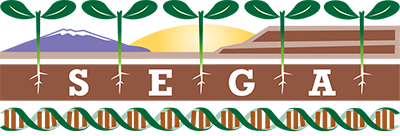You are here
Common garden experiments disentangle plant genetic and environmental contributions to ectomycorrhizal fungal community structure.
Publication Type:
Journal ArticleSource:
New Phytologist, Volume 221, Issue 1 (2018)URL:
https://nph.onlinelibrary.wiley.com/doi/10.1111/nph.15352Abstract:
<p>The interactions among climate change, plant genetic variation and fungal mutualists are poorly understood, but probably important to plant survival under drought. We examined these interactions by studying the ectomycorrhizal fungal (EMF) communities of pinyon pine seedlings (<em>Pinus edulis</em>) planted in a wildland ecosystem experiencing two decades of climate change‐related drought We established a common garden containing <em>P. edulis</em> seedlings of known maternal lineages (drought tolerant, DT; drought intolerant, DI), manipulated soil moisture and measured EMF community structure and seedling growth. Three findings emerged: EMF community composition differed at the phylum level between DT and DI seedlings, and diversity was two‐fold greater in DT than in DI seedlings. EMF communities of DT seedlings did not shift with water treatment and were dominated by an ascomycete, <em>Geopora</em> sp. By contrast, DI seedlings shifted to basidiomycete dominance with increased moisture, demonstrating a lineage by environment interaction. DT seedlings grew larger than DI seedlings in high (28%) and low (50%) watering treatments. These results show that inherited plant traits strongly influence microbial communities, interacting with drought to affect seedling performance. These interactions and their potential feedback effects may influence the success of trees, such as <em>P. edulis</em>, in future climates.</p>
- Log in to post comments
- Google Scholar
- DOI
- RTF
- EndNote XML
- RIS
Theme by Danetsoft and Danang Probo Sayekti inspired by Maksimer
